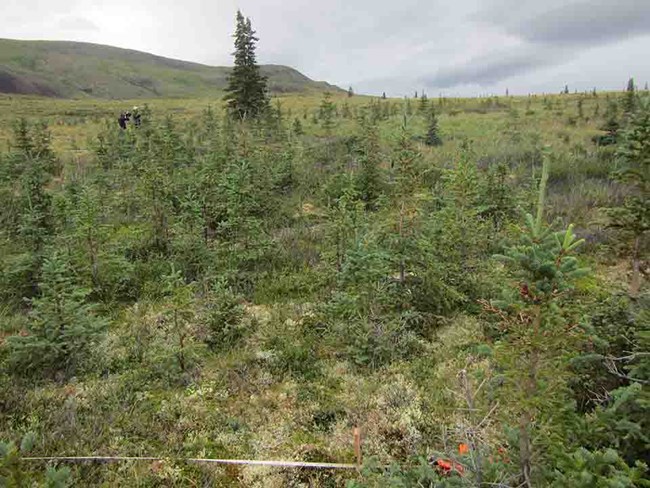Last updated: December 30, 2019
Stand basal area and solar radiation amplify white spruce climate sensitivity in interior Alaska: Evidence from carbon isotopes and tree rings
Abstract
The negative growth response of North American boreal forest trees to warm summers is well documented and the constraint of competition on tree growth widely reported, but the potential interaction between climate and competition in the boreal forest is not well studied. Because competition may amplify or mute tree climate‐growth responses, understanding the role current forest structure plays in tree growth responses to climate is critical in assessing and managing future forest productivity in a warming climate. Using white spruce tree ring and carbon isotope data from a long‐term vegetation monitoring program in Denali National Park and Preserve, we investigated the hypotheses that (a) competition and site moisture characteristics mediate white spruce radial growth response to climate and (b) moisture limitation is the mechanism for reduced growth. We further examined the impact of large reproductive events (mast years) on white spruce radial growth and stomatal regulation. We found that competition and site moisture characteristics mediated white spruce climate‐growth response. The negative radial growth response to warm and dry early‐ to mid‐summer and dry late summer conditions intensified in high competition stands and in areas receiving high potential solar radiation. Discrimination against 13C was reduced in warm, dry summers and further diminished on south‐facing hillslopes and in high competition stands, but was unaffected by climate in open floodplain stands, supporting the hypothesis that competition for moisture limits growth. Finally, during mast years, we found a shift in current year's carbon resources from radial growth to reproduction, reduced 13C discrimination, and increased intrinsic water‐use efficiency. Our findings highlight the importance of temporally variable and confounded factors, such as forest structure and climate, on the observed climate‐growth response of white spruce. Thus, white spruce growth trends and productivity in a warming climate will likely depend on landscape position and current forest structure.
Nicklen, E. F., C.A. Roland, A. Z. Csank, M. Wilmking, R. W. Ruess, and L. A. Muldoon. 2018. Stand basal area and solar radiation amplify white spruce climate sensitivity in interior Alaska: Evidence from carbon isotopes and tree rings. Global Change Biology 00:1–16. https://doi.org/10.1111/gcb.14511

